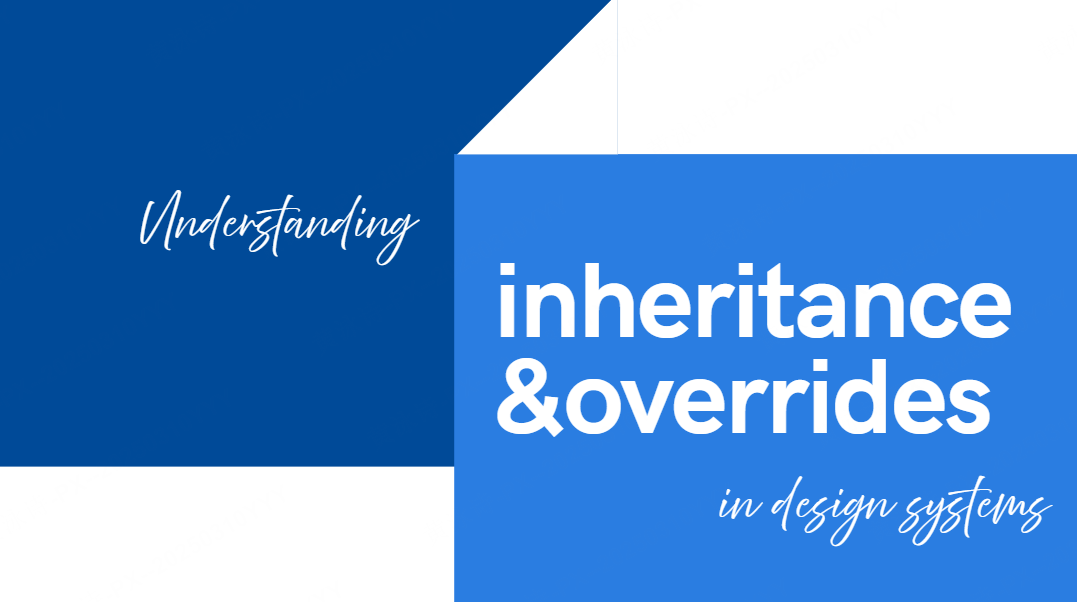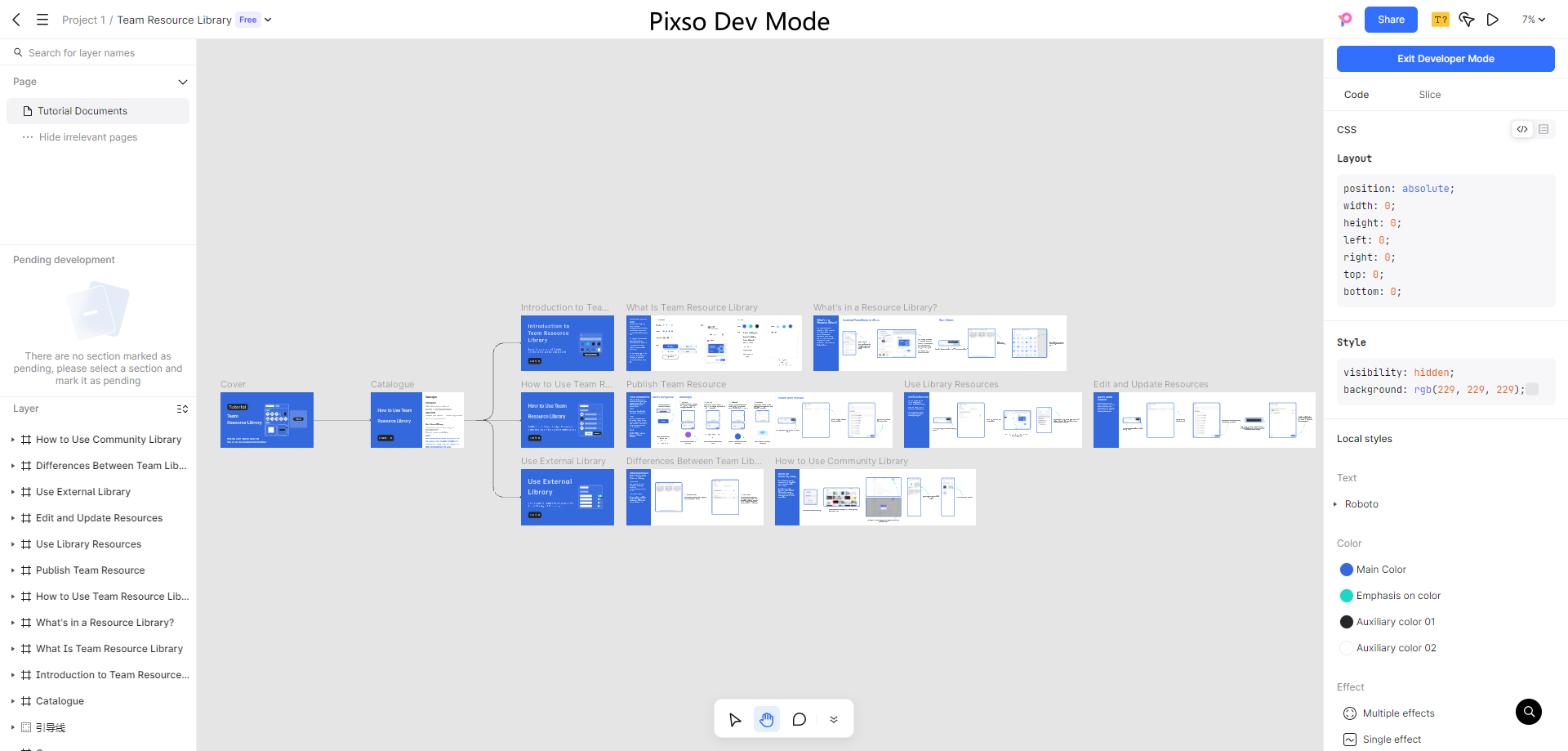In design systems, inheritance and overrides describe how styles, components, and properties relate to one another. Through inheritance and overriding, elements can share common attributes while still adapting to different layouts or themes. This approach keeps designs organized and lets teams make adjustments without starting from scratch.

Part 1. What Is Inheritance and Override?
At its core, inheritance and overrides explain the relationship between a master component and its instances. A master component in design systems serves as the source of truth that has the primary styles, layout, and properties. When instances of this component are reused throughout a project, it inherits these automatically. This is the "inheritance" part.
Still, not all instances need always copy the master component verbatim. Designers may sometimes have to locally modify individual instances without touching the master or the other instances. Here is where "overrides" become important. Through enabling selective modification, inheritance and overriding allow flexibility without compromise in overall consistency.
For example, on a button element, the master button can define the color, padding, and font. Instances of this button on other screens inherit these properties, but individual instances can override text label, size, or icon location. This is how designers are consistent in their look but allow for required customisation.
By understanding inheritance and overrides, teams can prevent disasters such as inconsistent style, misaligned layout, and manual updates that do not make sense. Pixso 2.0 makes these ideas work more smoothly by refining how rules of inheritance function and overriding is identified.
Part 2. Problems with Traditional Component Overrides
Although they are extremely important, working with inheritance and overriding can be complex, especially in large-scale design systems. Traditional tools usually suffer from several significant problems:
- Precision of Override Detection: If a design environment contains hundreds of occurrences, then software may find it difficult to identify whether the updates are overrides or whether they are meant to inherit from the parent component. Misunderstandings lead to unexpected results and inconsistency.
- Duplicate Component Management: Where there are multiple instances with shared names, layers, or hierarchical geometry, conflicts are unavoidable. Without strict controls, some propagations may not propagate correctly, resulting in excessive designer work.
- Manual Adjustment Overhead: Designers also tend to spend a lot of time manually fixing instances that failed to capture changes properly. This is inefficiency and increases the chances of errors.
Pixso 2.0 addresses these challenges by simplifying the inheritance and overrides logic for improved reliability and predictability. Designers do not have to remember complex rules or spend time manually correcting inconsistencies.
Part 3. Pixso's Optimized Inheritance and Override Rules
The enhanced features in Pixso 2.0 are focused on providing more accurate and useable inheritance and overriding. Here is how the updated rules work:
- Improved Accuracy of Override Recognition
Pixso now employs more precise rules when determining whether an instance should be overridden or inherited. This reduces unintended behavior and has overrides behave consistently from instance to instance.
- Conditional Inheritance by Name, Hierarchy, and Order
The same named, hierarchical, and ordered instances will automatically inherit changes. This feature ensures that changes to master components percolate as desired while maintaining consistent results.
- Sequential Resolution of Duplicates
Where multiple instances share the same attributes, inheritance follows a specified direction. This approach eliminates conflicts and enables every instance to receive updates in a logical, organized manner.
These enhancements significantly ease designers' work with massive component libraries. Uncomplicating compound rules to comprehensible, actionable reasoning, Pixso 2.0 reduces designers' cognitive load, allowing them to focus more on creativity and workflow optimization rather than debugging component performance.
For example, imagine that a UI library has a master card component added to multiple screens. Some cards require minor text or icon adjustments, while others require inheriting the padding or background color changes. Pixso's override inheritance, and optimized inheritance address such updates automatically where necessary, with overrides preserved. Designers have less to worry about, save time, and have design consistency throughout the entire project.
Part 4. Practical Tips for Using Inheritance and Overrides in Pixso
To leverage Pixso's overriding and inheritance functionalities, consider the following helpful guidelines:
- Maintain Naming Consistency: Use standardized and concise naming conventions for instances and master components. This allows Pixso to efficiently identify correct inheritance relationships.
- Maintain Hierarchy: Properly structure layers and groups to support consistent inheritance. Hierarchical consistency reduces potential override conflicts.
- Use Sequential Overrides: While duplicating items, consider order. Pixso's sequential handling enables updates to cascade in a logical manner.
- Periodically Audit Components: Inspect your design system from time to time so that overrides are intentional and inherited properties are uniform.
Adhering to these best practices, design teams can leverage Pixso's inheritance and overrides to enjoy a clean, efficient, and stable design path. Teams can grow their UI libraries without risk of unsuspected surprises or inconsistency.
Part 5. Best Practices for Efficient Component Management
Along with tips that work, adherence to a few best practices will further enhance component management via inheritance and overriding:
- Develop a Component Library Standard: Define clear rules for naming, hierarchy, and allowable overrides. This way, everyone has the same process to contend with.
- Use Inheritance Judiciously: Decide what properties always inherit from the master and what properties are acceptable to override. Inheritance used judiciously adds to consistency.
- Document Override Rules: Maintain a reference guide for your team on how overrides are used in your design system. This cuts down on confusion and speeds up onboarding for new designers.
- Merge Overrides with Collaboration Tools: When designing with a team, blend Pixso's inheritance capabilities with collaborative comments and version tracking to make sure changes are explicitly communicated.
By implementing these best practices, teams can get the maximum benefit of inheritance and overrides, reducing errors, saving time, and improving overall design quality.
Conclusion
A UI/UX designer handling complex design systems needs to understand inheritance and overrides. Pixso 2.0 interprets these concepts, offering precise rules and efficient logic that ensure uniform component behavior, reduce errors, and save valuable time.
Overcoming inheritance and overriding in Pixso enables design teams to maintain big-scale component libraries with confidence, streamline workflows, and provide high-quality, consistent UI/UX designs. Incorporating features like these into your design process not only streamlines your workflow but also frees designers up to focus on creativity rather than debugging inconsistencies.






